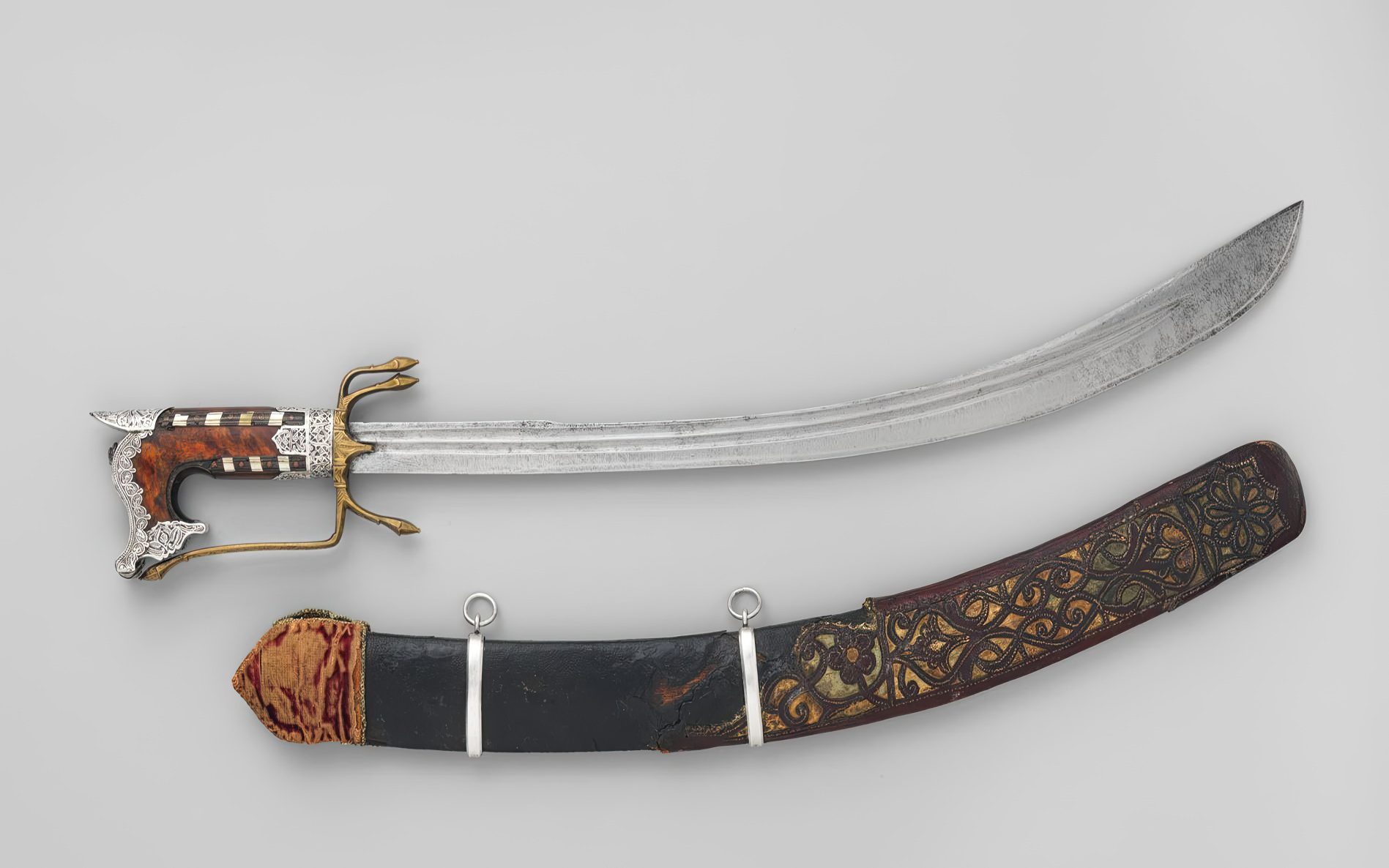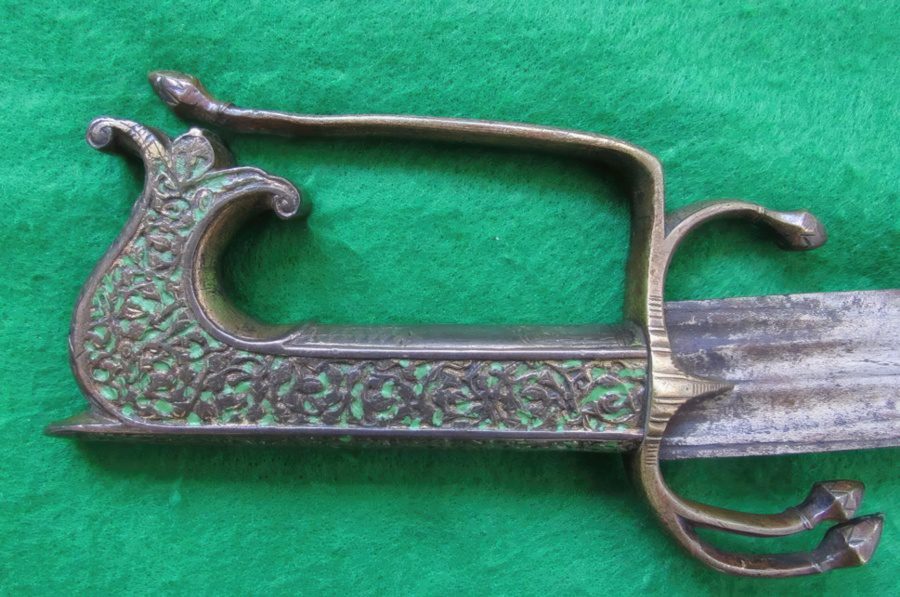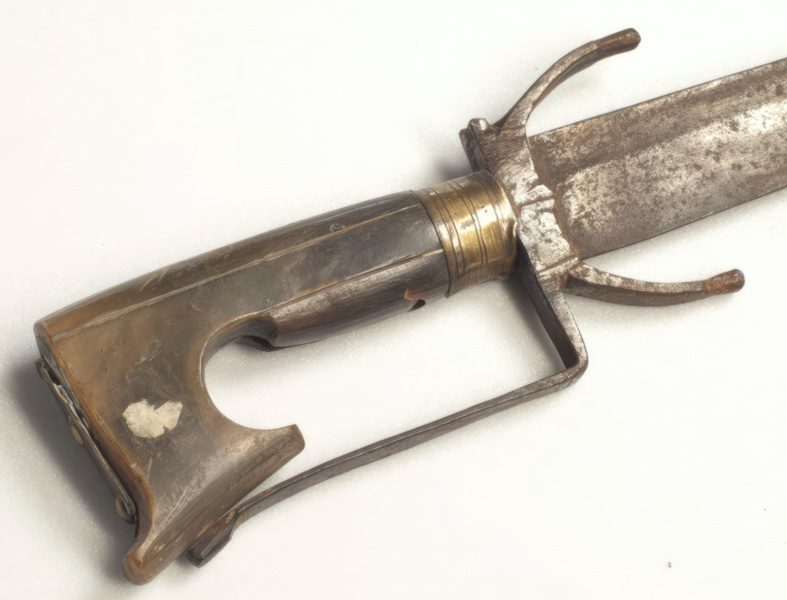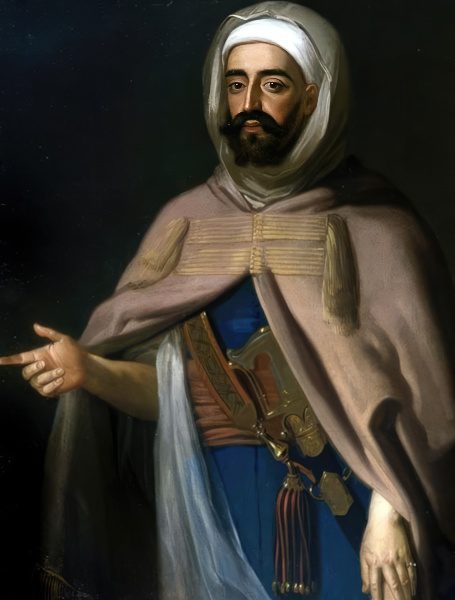Nimcha Sword: The Deadly Beauty From North Africa

What’s in this article?
African swords are getting more recognition thanks to their exotic designs that were effective for warfare and how they acted as ceremonial and decorative pieces. One such sword is the African Nimcha blade, used mostly throughout the northwestern and northeastern African regions. The Nimcha swords were highly sought after and very popular with African and Arabic nobles, civilians, traders, warriors, and raiders.
This article will review the different types, explain their beautiful details and many uses, and explore their origins.
Characteristics of the Nimcha Sword

The main characteristics that set the Nimcha Sword apart from other swords are the guard, handle, and pommel. The blades of the Nimcha are inspired and used from the steel of European and Arabic styles of sabers and swords.
Blade

The curved blade of the Nimcha sword is single-edged, meaning sharpened just on one side. It features the same curve as a Middle Eastern Scimitar, along with other sabers from the Arab world used throughout North America. That is why some blades of the Nimcha are the same as the Saif sword.
Other types of blades commonly seen on the Nimcha are European steel blades. These can be either from a Cutlass, Italian Storta sword, Falchion, or European curved sabers inspired by Hungary and Eastern Europe. Most of these blades feature a fuller, which is meant to make the sword lighter.
Some Nimcha have blades that taper from the guard to the sharp tip, while others are wider and can feature a Turkish yelman (broadening of the blade). The most common blade length for the Nimcha sword is between 24 to 34-inches (60 to 85 cm), which is the ideal length for a one-handed sword.
Guard

The guard of the Nimcha sword is one of its strongest and most unique traits. It can come in different shapes and sizes, as described above, but the most common is the three sets of quillions parallel to the blade itself. Two of these metal quillions are inside the actual blade curve, while the third is on the outer side. These quillons end with a bud or a round metal-shaped piece.
These quillons could be inspired by European or Indian swords, but they are mostly seen on Maghreb and Morrocan Nimcha swords. This is likely because Algiers and Tunis, which were partly ruled by the Ottoman Empire, used the Turkish style of swords. Their function could be purely for aesthetics or for catching and parrying enemy blades.
Handle

The handle of the Nimcha sword is straight and fairly broad compared to other handle swords. It is believed that this style of handle is also inspired by Arabic swords?a notable example is the Kaskara blade, but some trace it to early Northern Italian sword hilts. A specific trait of the handle is that it’s fairly heavy and offers a good balance to the overall blade.
The handle is one of the most decorated parts of the Nimcha sword. Some swords can have a simple wooden leather-covered handle, while others can be made out of metal, tortoiseshell, ivory horn grip, or covered with silver mounts or rare exotic pearls. It has a closed knuckle guard that offers protection to the user.
Pommel

Nimcha swords have a rather unique and familiar type of pommel seen in northwestern and eastern Africa. It is a broadened and thickened curved pommel that resembles a lion’s head with an ear or without one. Its function is to hold the full-tang blade that goes through the handle, but it also serves as a decorative piece.
This type of heavy pommel is a good back support for the hand and offers a strong grip. The pommel has a metal piece that starts at its curve and links with the guard to form the handle protector.
Scabbard

Nimcha’s scabbards are usually broader and wider because when the sword is sheathed, it should almost touch the singular quillon on the outside. These scabbards can be heavily decorated with precious metals and many engraved Islamic inscriptions. A cord or leather wrap can be tied to its neck to hold the sword to its user.
Weight

The Nimcha sword can come in a variety of different weights?some very light and short, primarily for decorative purposes?while others, as part of a warrior’s armor, might weigh more. The typical weight for the Nimcha sword is between 1.5 to 2.4 lbs (0.7 to 1.1 kg).
Size and Length
Algerian and Moroccan Nimcha swords come in various sizes depending on how they are to be used. The most common Nimcha swords from history are between 31 to 39 inches (0.8 to 1 meter), ideal for mounted and dismounted use.
Types of Nimcha Swords

It is difficult to precisely locate where the Nimcha comes from but the safest answer would be that it is a North African sword inspired by Europe and Arabia, as well as by Turkish swords. This theory is due to the many different handle and guard designs seen on the Nimcha Swords that can be classified into three different groups.
Parallel Quillons
The most common Nimcha seen during the 18th and 19th centuries are the Nimcha blades, with three sets of quillons parallel with the blade. These types of Nimcha Swords are linked with the Northern Africa, primarily Morocco, but also neighboring Algeria and Tunis.
D-Ring Guard
Some Nimcha swords have a D-shaped ring guard featuring two or three sets of quillons beside it. These Nimcha Swords are sometimes called Zanzibari because they are found on the eastern coast of Africa and the southwestern regions of Arabia.
Outward Quillons and No Quillons
The last types of Nimcha Swords feature quillon shapes, but they are perpendicular and aren’t parallel with the blade. These are somewhat hybrid between the two groups mentioned above. Some may see them as the earliest types of Nimcha Swords. Some Nimcha Zanzibari blades feature two sets of quillons that need to stay under the D-ring guard but without the actual D-ring guard.
Uses for the Nimcha Sword
The Nimcha sword is a one-handed sword and its primary use is based on hacking and slashing strikes. However, depending on the blade type, it can also be used for thrusting due to its sharp tip. It offers nimble moves that can be highly versatile and unusual, as used on the curved Shamshir sword.
Warfare and Combat

The primary use of the Nimcha sword was for warfare and combat. It is a functional and effective blade design made of sharp steel used for slashing strikes. The Nimcha came at a period when not a lot of armor and shields were used in battles, so its slashing of unarmored opponents was very effective. In warfare, it was used to fight in formations combined with rifles, often using guerilla tactics.
It saw frequent use by sailors in northwestern Africa, Arabia, Zanzibar, and Yemen. Raiders like the Barbary corsairs, and Muslim privateers that plundered their way across trade routes, also took a liking to the Nimcha sword.
Prestigious Item and Trade

The elaborate hilt design of the Nimcha sword made it a highly prestigious tool. Ambassadors and traders of the late 17th and 18th centuries frequently had it on their waists to signify their high status. Newly crowned sultans and conquerors, foreign traders, and prestigious warriors could be seen with the Nimcha at their waist.
The Nimcha sword was also a highly prized possession and, thanks to its exotic design and hilt, highly sought after among Arabic merchants. In some cases, it was used as a currency to buy goods, given as a gift, or a wedding dowry and act of diplomacy.
History and Origins of the Nimcha Sword

The Nimcha is a North African sword primarily linked with the regions of Morocco, Algiers, and Tunis. It is believed that this sword may trace back to the 16th century, but its golden era was the 17th, 18th, and 19th centuries.
Its origins are based on an eastern and African sword influence primarily from the Saif swords and hilts seen in Arabic trade routes along the southwestern coasts of Arabia. Although it is called a Morrocan sword, the first users could have been Algiers since many types of the same swords have been found there. The Algerian Nimcha might have stopped production because of the Ottoman influence and rulership and the introduction of their style of sword.
The unique guard design could be influenced by highly ornamented European swords that were produced at the time, primarily the Northern Italian Storta sword. Another theory is that its influence might be the Kasthane Indian sword because it was at the same time that Ottoman traders were active in Sri Lanka.
The Nimcha was popular in warfare, trade, and ceremonies, and its longest use was in Morocco. In the later stages of its history, many of the blades were imported from Europe and added to locally made hilts.




